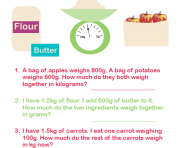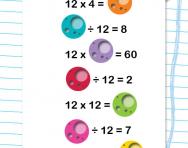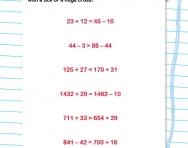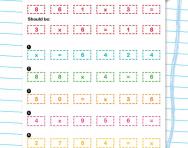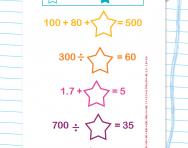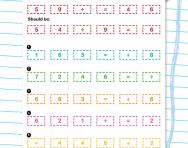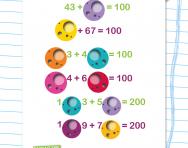What is a number sentence?
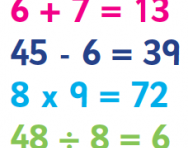
What is a number sentence?
A number sentence is an arrangement of numbers and symbols, such as the following:
6 + 7 = 13
45 - 6 = 39
8 x 9 = 72
48 ÷ 8 = 6
There was a time when teachers would refer to the word 'sum' when using any of the above, but this is confusing for children, as the word 'sum' is a term that should only be used when talking about addition.

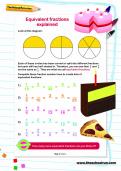
Boost Your Child's Maths & English Skills!
- Start your child on a tailored learning programme
- Weekly resources sent direct to your inbox
- Keep your child's learning on track
Children start learning how to write addition and subtraction number sentences in Year 1. They will probably start learning about addition by making two groups (for example: 5 bananas and 2 apples) and putting them together. They then develop towards working out how to write these numbers and arrange them with the symbols + and = to make a number sentence that makes sense.
In Year 2, children start to write number sentences for multiplication and division, so they need to understand the symbols: x and ÷ and be able to write them.
Working with number sentences in the classroom
At any time in Key Stage 1 or 2, teachers may show children a word problem and then ask them to write the number sentence that goes with it, for example:
I have a £5 note. I spend £3.20. How much money do I have left?
On showing children this problem, a teacher would probably ask what operation the children need to do: add, subtract, multiply or divide? They may then ask them to write out the number sentence that they will be carrying out to work out the problem, which would be:
£5 - £3.20 =
Children may also come across number sentences with gaps in them. In Key Stage 1 they may come across something like this:

and be asked to work out what goes in the gap.
These will get progressively harder in Key Stage 2, for example:

Sometimes children will be given number sentences where there are two operations on each side, for example:

Here, they need to understand that since the left hand side equals 16, the right hand side has to equal the same amount, since 20 - 4 = 16, the number in the gap should be 4.
They may be given a number sentence like the one above, but where there is not one answer to put in the gap:

Here, it may be a good idea to try a number out in the first gap, for example, 10:
10 + 20 + 10 = 40
We know that 5 x 8 = 40, so 8 could then go in the other gap.
A teacher may then ask children to find as many other possibilities as they can.

Give your child a headstart
- FREE articles & expert information
- FREE resources & activities
- FREE homework help


